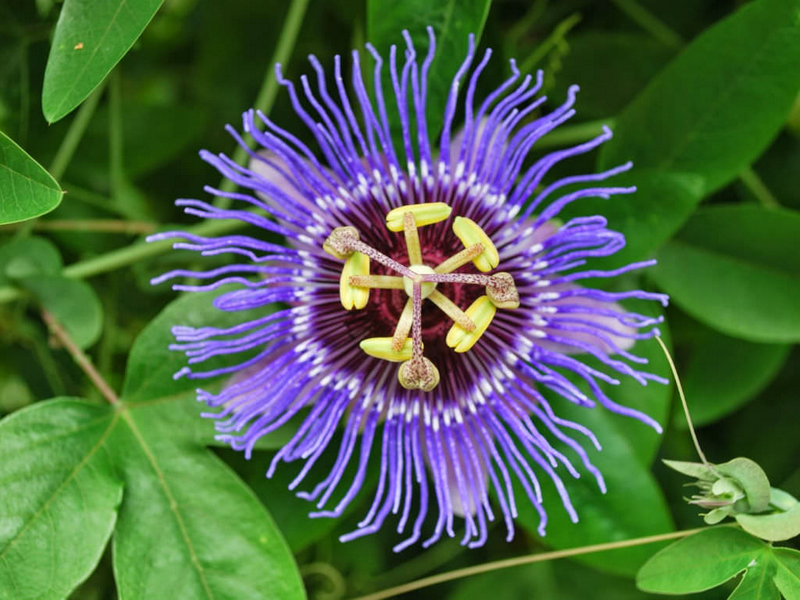Passion Flower (Maypop)
Passiflora incarnata
Click here to download a PDF of this plant information page (for printing).

Sun Exposure: Full Sun, Part Sun
Season of Interest: Summer, Fall
Bloom Time: July - September
Bloom Color: Purple/Lavender
Height: 10 to 20 ft.
Spread: 3 to 6 ft.
Spacing: 6 ft.
Water Needs: Average
Maintenance: Prune in winter
Soil Type: Loam, Sandy, Clay
Soil pH: Acidic, Neutral
Soil Drainage: Well drained
Pests: None
Diseases: None
Wildlife: Bees, Buterflies, Hummingbirds

Description:
Purple passion flower is a fast-growing, evergreen, and tendril-climbing vine. Despite its tropical appearance, this sprawling plant is surprisingly tough (it's the hardiest of all the passionflower species), and the striking, fragrant flowers are attractive to butterflies and other pollinators. This Southeastern U.S. native was cultivated for its orange-yellow edible fruits (called Maypops because of the sound they make when stepped on) by Native Americans, and they provide a nutritious source of winter food for wildlife. The foliage provides year-round interest. It flowers from June to August and fruits from September to November. For more information see:
plants.ces.ncsu.edu/plants/passiflora-incarnata
Care and Growing Tips:
This twining vine is ideal for growing up against trellises, walls, or fences. If you want to encourage flower and fruit production rather than excess foliage growth, restrict the growth of the spreading root suckers. Growing it in a container works well. This climbing vine can handle drought conditions, but keep the soil consistently moist for better flower production. Slow, deep watering at root level is best. Applying a few inches of loose mulch at the roots can help to retain moisture, especially when conditions are dry. Just make sure the mulch doesn't press up against the plant stem.
These tropical-looking flowers are surprisingly cold-tolerant. Providing your purple passionflower is planted in well-drained soil, the roots should be hardy down to around -15 F. Regular light feeding helps ensure your purple passionflower blooms prolifically. Select a fertilizer that isn't too heavy in nitrogen; otherwise, growth will focus on the green foliage rather than the flowers. Fertilize in the early spring before the emergence of new growth. Once the flowers appear, feeding at least once a month or more through to early fall is ideal for these heavy feeders. You won't need to prune purple passionflowers regularly. However, if you want to encourage a full, bushy appearance and prevent your climbing vine from looking straggly, it helps to pinch back the plants in their first growing season. Because flowering occurs on new growth, pruning should be done in late winter or early spring to ensure new blooms still appear in abundance later in the spring.